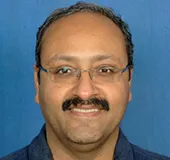
India has taken some key policy decisions and launched big initiatives that defines India’s pathway to achieving Universal Health Coverage (UHC), although it has a long way to go in achieving the UHC. Even as India is at an early stage of implementing those big initiatives, the irreversible policy choices that India has made hold useful lessons for other countries that are yet to make those choices. Countries that may gain from the India’s experience are the neighbouring countries – BIMSTEC region countries -- as well as the countries in Africa region with whom India is trying to deepen its health sector engagement. These countries have tremendous scope to learn and benefit from each other’s experiences. Indeed, some of the India’s health policy choices have been influenced by the experiences of Thailand and Sri Lanka.
India occupies disproportionately large share in the BIMSTEC region: accounting for 80% of BIMSTEC region’s population, 75% of its GDP and 90% of the regional population living at < $1.9/day. Given India’s dominance in BIMSTEC region, and also the fact of its being the fastest large economies in the world, it is instructive to look at and learn from India’s early experience as it charts its path towards UHC.
Health in India started to become a political priority from 2005 when the then UPA government launched a national programme, NRHM, aimed at improving public health service delivery in rural areas and committed itself to doubling the share of public health spend in GDP in a of 5 years (The Hindu). The programme led to significant public investments in rural health infrastructure. These investments resulted in tangible gains especially in MCH indicators. Complementing NRHM, the government launched in 2008 a national health insurance programme, RSBY, for the poor households to insulate them from hospitalisation expenses. Within a few years of its launch, RSBY was rapidly scaled to cover around 40 million families (about 190 million individuals), benefiting over 14 million individuals cumulatively.
However, both these national programmes remained sub-optimal due to systemic constraints facing the health sector notably, shortage of human resources, limited programme implementation capacities, varying levels of commitment of different states and so forth. The national (NDA) government that came to power in 2014 not only continued many of the ongoing initiatives with deeper commitment but also undertook certain systemic reforms from a longer-term perspective. A few major lessons that emerge from India’s early experience of reforms and health sector initiatives are discussed in the rest of this note.
Overarching structural reforms
In the last few years, the Government of India (GOI) has undertaken major structural reforms with the view to achieve higher economic growth rate and accelerate the development process in the country. Two such reforms that warrant mention here are: (i) indirect tax reforms aimed at improving tax compliance and removing double incidence of taxes (ii) reorienting government’s planning institution to play a strategic role in transforming India by providing policy inputs and fostering cooperative federalism by aligning states’ interest with the national interest (Niti Aayog). Although wider in scope, these reforms have a significant bearing on the financing and effectiveness of social sector programs, including those in the health sector. While the tax reform has the potential to improve government revenues and create fiscal space for the funding of social sectors, fostering of cooperative federalism will improve effectiveness of various central government programmes especially whose implementation is the sole responsibility of states. Overtime, these reforms should result in more money for, and improved effectiveness of, social sector programmes.
Providing policy direction
The GOI came out with the National Health Policy 2017 (NHP 2017), taking a comprehensive look at the challenges facing India’s health sector and proposed strategies to dealing with those challenges. NHP 2017 informs the strategic direction in which GOI would steer India’s health system and clarifies the role of the public and private sectors therein. NHP 2017 is quite ambitious, setting several measurable goals – in terms of inputs, health system performance and impact -- to be achieved in a time-bound manner.
In the operationalization of NHP 2017, GOI has undertaken several initiatives both within and outside of the health sector that are worth paying attention to. This note, however, focuses on the health sector initiatives only.
Moving on both tracks – primary care and hospital care
The GOI is reorienting the primary care system in keeping with the rising burden of non-communicable diseases. The government has a goal of converting by 2022 the existing 150,000 sub-centres that provide selective care into Health and Wellness Centres (HWCs) that would provide comprehensive primary care.
On the hospital care, the government has rolled out national health protection scheme, PMJAY, for supporting demand for hospital care by providing financial protection of up to INR 5 lakh/household per year to almost 100 million poor households against hospitalization costs. Although this is a demand side initiative that entitles the population, identified through a national level survey, to a well-defined hospital benefit, this scheme is also expected to strengthen the supply side in the underserved areas.
Although the government is simultaneously moving on both the tracks that together comprises Ayushman Bharat (AB), each has its own implementation trajectory. Taking each of these programs to scale is as much a function of funding as of building necessary capacities at different levels (state, district, block, health facility, and community level) that makes it a medium-term play.
Both the tracks build on the ongoing programmes and therefore factor in the lessons that emerge from the earlier programmes. Design of these programmes holds valuable lessons for other countries too.
Strengthening public hospitals
Notwithstanding the roll out of PMJAY in which the government is purchasing care from accredited public and private hospitals, the GOI is working on strengthening the public hospitals under its programme, PMSSY. Under this programme, the GOI is setting up new tertiary care hospitals as well as upgrading government medical colleges in different regions to address regional imbalance in the availability of tertiary care and augment facilities for quality medical education. PMSSY reflects government’s commitment for a stronger role of public hospitals. The rationale for this is to be found in the public hospitals acting as a countervailing force in a mixed care delivery system. While the public sector sets benchmarks for affordable care, the private sector sets benchmark for efficient organisation of care. Therefore, each has a balancing role to perform in the market for healthcare services, even as they both need to be made more accountable to the stakeholders.
Balancing shorter term imperatives with longer term interests
While AB will take some time to reach scale, the GOI is making certain services available to the needy population. Accordingly, the GOI has started programmes such as free dialysis services to the poor in partnership with the private sector, free drugs and diagnostic services in public health facilities, free ante-natal check-up for pregnant women by a specialist with the participation by private doctors at government health facilities on the 9th of every month and so forth. Relevance of these initiatives in the shorter term is indisputable but their continuation over longer period is untenable. Some of these initiatives may get subsumed in AB once the programme reaches certain level of maturity.
Alleviating systemic constraints
The GOI has been making concerted efforts to carry out upstream reforms that are posing a major constraint in the strengthening of service delivery in India. Human Resource for Health (HRH) is one such area. There is a huge shortage of skills across most types of health workers. The Medical Council of India (MCI) – that regulates the supply of medical doctors and quality of medical education in the country – has been a major barrier to easing the shortage of doctors in the country. The government is in the process of replacing MCI that is run by medical professionals with the National Medical Commission to be run by technocrats. With this institutional reform, hopefully the shortage of doctors will become a thing of the past in due course. Similarly, GOI has been taking other measures to ease the supply of other health professionals.
Regulating health sector
This has traditionally been a weak area partly because of the strong vested interests and partly because of certain systemic constraints that exists in this sector. Recently, GOI has taken some baby steps such as regulating the prices of selected medical devices and drugs to make healthcare affordable and also to send a clear signal to the private sector to self-regulate, promoting the use of generics in lieu of expensive branded medicines, making generic drugs available at cheaper rates through a chain of stores, curbing irrational use of medicines by banning many fixed dose combination drugs lacking scientific logic.
On the regulation of health facilities, although GOI passed the Clinical Establishment Act that regulates all clinical establishments in terms of minimum standards of facilities and services provided by them, most states have yet to adopt it, which should happen with time.
Leveraging Information and Communication Technology (ICT)
As in many other sectors, ICT revolution is playing a transformative role in the health sector too. GOI is promoting the use of ICT in the health sector in a wide variety to ways: from improving access to care through, for example, tele-consultation/tele-radiology to improving effectiveness of care by, for example, empowering the frontline health workers with handheld devices; from improving health system performance through IT enabled procurement and supply chain system to improving health governance through better programme management and monitoring; from changing providers’ and patients’ behaviours to measuring patient satisfaction and so forth. India -- a hotbed for ICT innovations – has much to offer by way of replicable, affordable, and scalable solutions.
These are then the broad contours of India’s pathway towards UHC. There is of course much richness in India’s early experience – just as there is considerable richness in what more needs to be done. Other developing countries have much to learn from India’s early experience.
The views expressed above belong to the author(s). ORF research and analyses now available on Telegram! Click here to access our curated content — blogs, longforms and interviews.




 PREV
PREV


